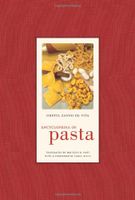Advertisement
Notes
Published 2009
1. Manuscript II, XI, 15, Biblioteca Nazionale, Florence.
2. L. Pulci, Il Morgante, cat. XVII, ed. G. Fatini (Torino: UTET, 1948). Pulci was a Florentine poet (1432–84).
3. Clematis (Clematis vitalba).
4. The Valli Valdesi, or Waldensian Valleys, comprise the Pellice, Germanasca, and lower Chisone valleys, in the Piedmont region, near the French border.
5. For more on the mostardele and their agnoli, see G. and W. Eynard, Supa barbetta La cucina delle Valli Valdesi (Torino: UTET, 1996), 57.
6. O. Lando, Commentario delle più notabili, et mostruose cose d’Italia (1548; reprint, Bologna: Pendragon, 1994). Ortensio Landi, a nobleman of Piacenza, is better known by the singular form of his name, Ortensio Lando. During the Renaissance, it was customary to decline surnames (like Latin adjectives), that is, to change their endings according to number and gender, as is still done, for example, in Russian (e.g., Anna Karenina). According to this practice, families would collectively be known in the plural (as in English today, “the Browns”). With time the plural became the only form of the name and was used by all its members without variation.

